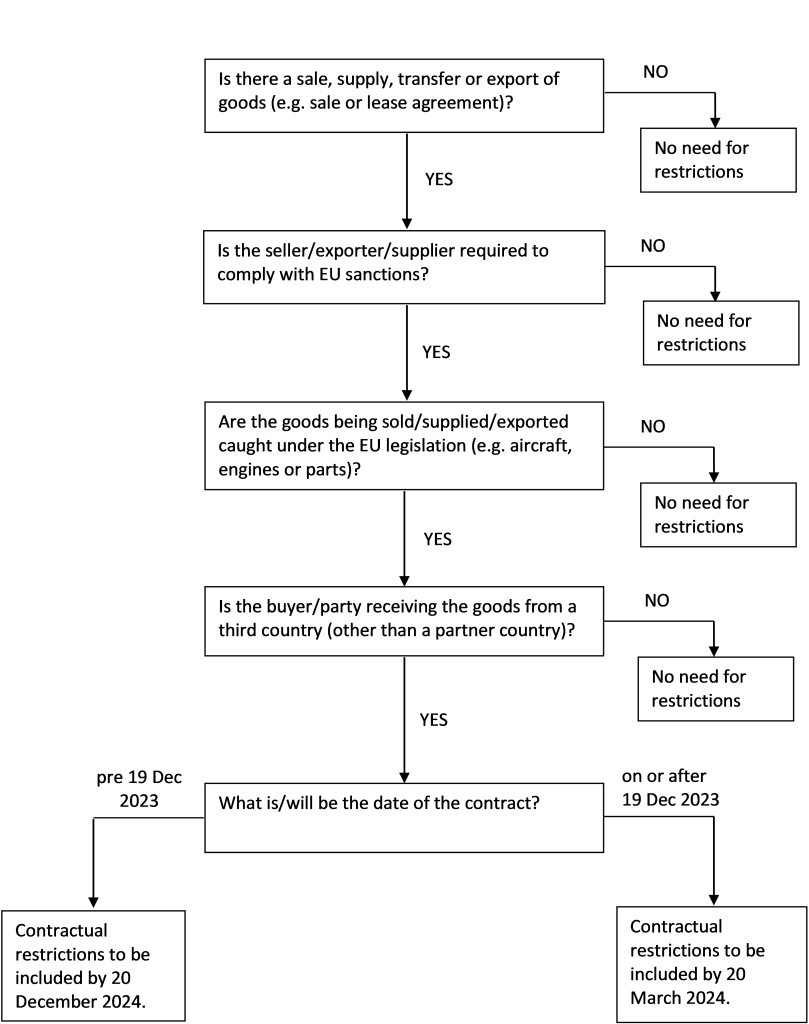1. The No Russia Rule – what is it?
The European Union (“EU”) adopted its 12th sanctions package (the “Sanctions Package”) against Russia on 18 December 2023 (through Council Regulation (EU) 2023/2878 of 18 December 2023 (the “New Regulation”) amending Regulation (EU) 833/2014 (the “Existing Regulation”)). The Sanctions Package is broad but there is one specific provision that will have far-reaching consequences for the drafting of aviation contracts, which is set out in full in Annex 1 to this note.
What is the No Russia Rule?
When selling, supplying, transferring or exporting certain goods to certain countries, exporters must, as of 20 March 2024, contractually prohibit re-exportation to Russia and re-exportation for use in Russia. The rule is aimed at restricting the re-export of the covered goods to Russia via other countries.





